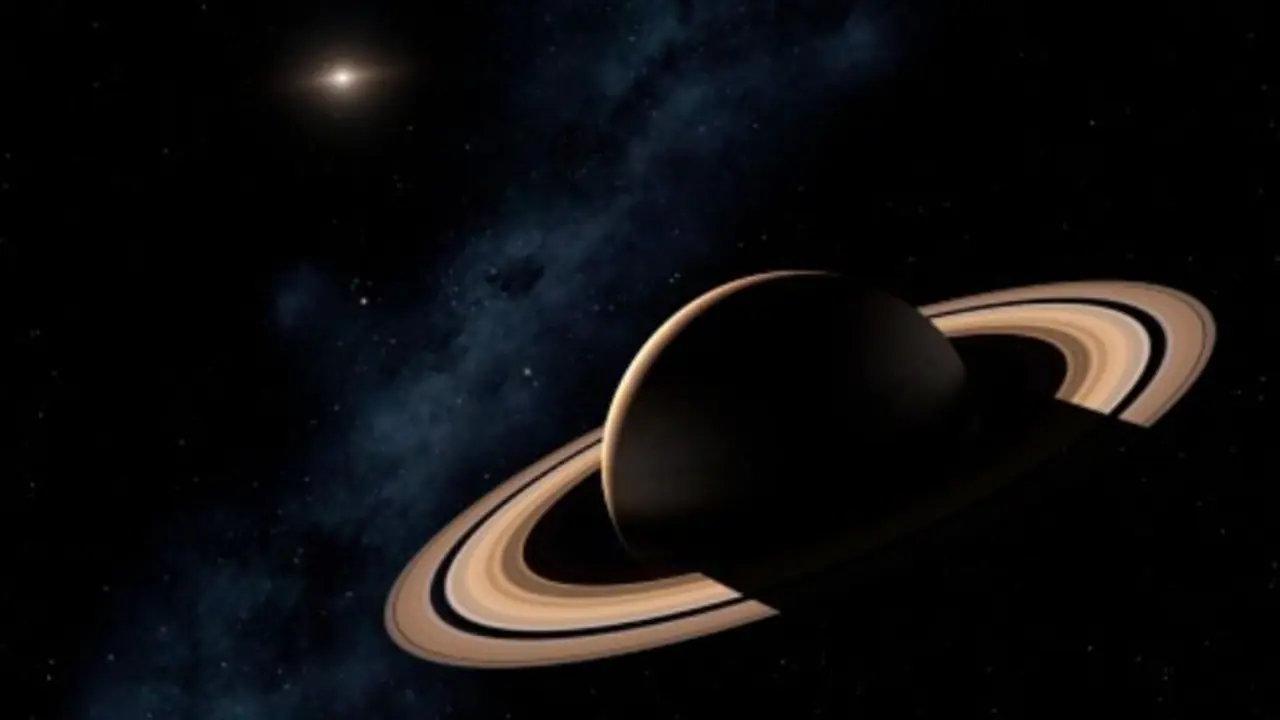Giovanni Cassini discovered Dione in 1684, a small moon of nearly 562 km in mean radius, close to one-third of our Moon.
NASA recently shared a new image of Saturn's Moon named Dione. The Moon appears as a small ball compared to the ringed gas giant during a transit. NASA stated that the image was photographed from a distance of nearly 2.3 million kilometres and reasoning the Moon appears even smaller than its actual size.

Following scientists, the transits play an essential role in understanding the relationship between the planet and its moons. While in transit, when the Moon passes between the Earth and Sun, it guides to the solar eclipse.
Dione was discovered by Giovanni Cassini in 1684. It's a small moon of nearly 562 km in a mean radius, close to one-third of our Moon. Dione orbits Saturn every 2.7 days at a distance of roughly 377,400 km, which equals the space that the Moon orbits around the Earth.
Scientists believe that Dione is mainly created of ice. The Dione's standard temperature of -186 degrees Celsius, ice is tough and acts like rocks.
NASA stated that the image of the 'unilluminated side' of Saturn's rings and its Moon was picturised in May 2015 by the Cassini spacecraft, which has been in space for 20 years. Scientists opted to send this spacecraft to its final mission after it went out of fuel to send to protect another Saturn moon, Enceladus, Which may have life-favourable conditions. In September 2017, Cassini entered Saturn's atmosphere.
The spacecraft has two elements, the Cassini orbiter and the Huygens probe. Cassini was a sophisticated mission designed by NASA, the European Space Agency, and the Italian Space Agency to explore Saturn and its complex system of rings and moons in unprecedented detail.
As per NASA, Saturn has 82 moons. Out of which, 53 have been confirmed and named, while the other 29 are still not confirmed. The largest Moon is called Titan.
Also Read: Jeff Bezos-led Blue Origin to send 6 passengers into space on Tuesday
Also Read: More than 5,000 worlds beyond our solar system, confirms NASA
Also Read: No survivors found in Chinese airliner crash, 132 were aboard
